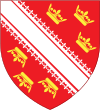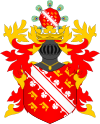Roman Catholic Diocese Of Metz
History
Metz was definitely a bishopric by 535, but may date from earlier than that. Metz's Basilica of Saint-Pierre-aux-Nonnains is built on the site of a Roman basilica which is a likely location for one of the earliest Christian congregations of France.
Originally the diocese was under the metropolitan of Trier. After the French Revolution, the last prince bishop, Cardinal Louis de Montmorency-Laval (1761-1802) fled and the old organization of the diocese was broken up. With the Concordat of 1801 the diocese was re-established covering the departments of Moselle, Ardennes, and Forêts, and was put under the Archdiocese of Besançon. In 1817 the parts of the diocese which became Prussian territory were transferred to the Diocese of Trier. In 1871 the core areas of the diocese became part of Germany, and in 1874 Metz diocese, then reconfined to the borders of the new German Lorraine department became immediately subject to the Holy See. As of 1910 there were about 533,000 Catholics living in the diocese of Metz.
When the 1905 French law on the Separation of the Churches and the State was enacted, doing away with public-law religious corporations, this did not apply to the Metz diocese then being within Germany. After World War I it was returned to France, but the concordatory status has been preserved since as part of the Local law in Alsace-Moselle. In 1940, after the French defeat, it came under German occupation till 1944 when it became French again. Together with the Archdiocese of Strasbourg the bishop of the see is nominated by the French government according to the concordat of 1801. The concordat further provides for the clergy being paid by the government and Catholic pupils in public schools can receive religious instruction according to diocesan guide lines.
Bishops
See also
References
- ^ Catholic Encyclopedia: Metz
- ^ Bailey, Rosemary. The National Geographic traveler. France. Washington, DC: National Geographic Society. 1999. p 128. ISBN 0792274261
External links
 Media related to Roman Catholic Diocese of Metz at Wikimedia Commons
Media related to Roman Catholic Diocese of Metz at Wikimedia Commons- Website of the diocese
- Catholic hierarchy
- Herbermann, Charles, ed. (1913). . Catholic Encyclopedia. New York: Robert Appleton Company.

